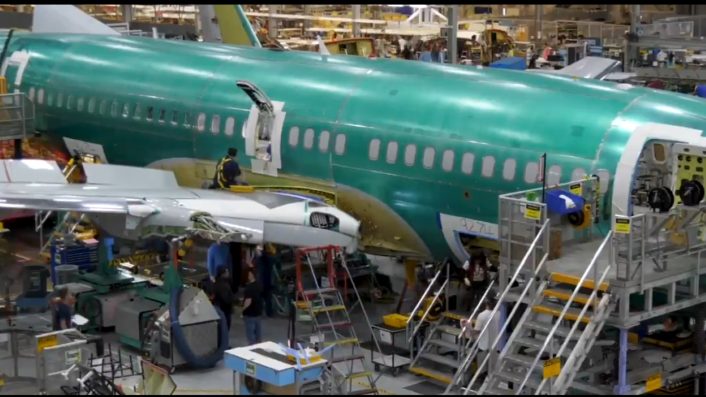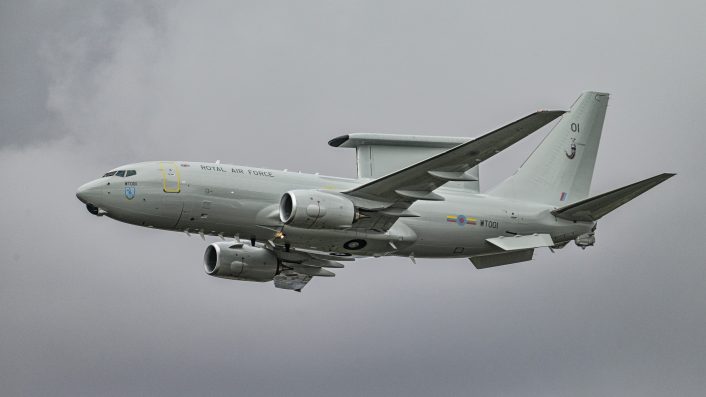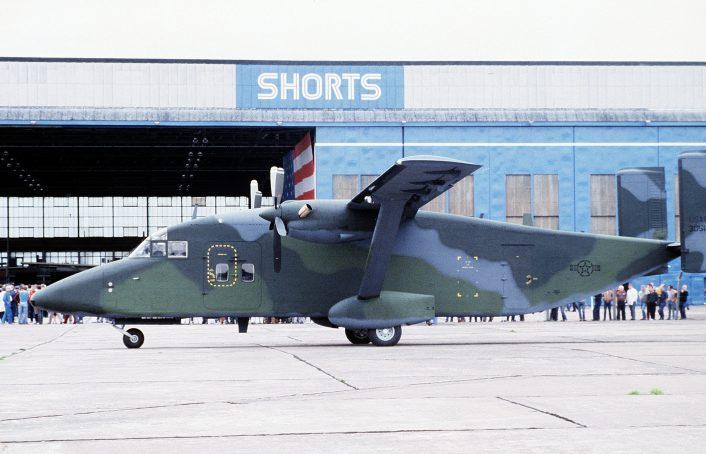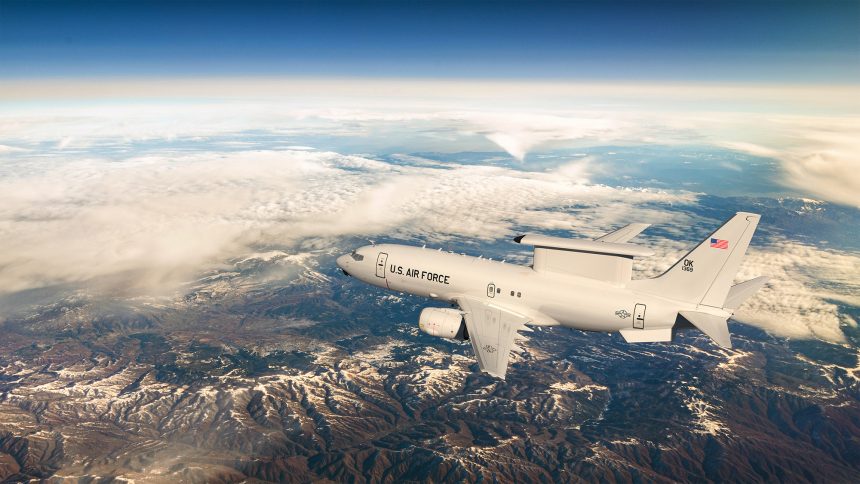Boeing will transfer two 737-700 airframes to STS Aviation in Birmingham for E-7 conversion in 2026.
Boeing will have two rapid-prototype E-7 Wedgetail Airborne Early-Warning & Control (AEW&C) aircraft converted in the United Kingdom, marking a rare instance of U.S. Air Force aircraft work being performed on British soil. However, questions persist over the program’s long-term future in U.S. defense budgets.
The UK Ministry of Defense (MoD) described the arrangement as a milestone, saying it will “create more than 150 new jobs in Birmingham and secures a further 190 jobs across the UK,” and that the contract “delivers an additional over £36M to the UK economy.” The work will use STS Aviation’s existing conversion line in Birmingham – currently the only facility worldwide set up for E-7 conversions – to transform Boeing 737-700 commercial airframes into Wedgetail AEW&C platforms for the U.S. Air Force.
Britain will build military aircraft for the @USAirForce for the first time since the Second World War.
The Boeing contract creates 150 jobs in Birmingham, secures hundreds more across the UK, and strengthens UK-US defence ties.
Read more here: https://t.co/qRWvEvr0nh pic.twitter.com/DTVKoh9ZJl
— Ministry of Defence 🇬🇧 (@DefenceHQ) September 18, 2025
Boeing is currently producing two 737-700 “green” airframes in Renton, Washington, as part of the rapid prototyping effort for the U.S. Air Force. Those airframes are to be shipped to STS for modification to E-7 configuration in 2026, leveraging the same conversion line already working on Royal Air Force examples.
Industrial and Strategic Implications
For the UK, the deal is being presented as both an economic and strategic win. The MoD framed the contract as evidence of Britain’s “world-leading defense industry,” and Defense Secretary John Healey said the agreement “creates and supports hundreds of jobs across the UK – making defense an engine for growth and strengthening our collective security.” The program also involves more than 40 UK-based suppliers and the construction of two new engineering facilities at RAF Lossiemouth.

For Boeing and the wider Wedgetail program, using the Birmingham conversion line reduces the need to rapidly expand conversion capability in the United States and makes practical use of an already certified facility. In fact, STS has already converted one 737-700 to the E-7 configuration for the RAF and has two more in varying states of assembly, providing a ready industrial base to support the U.S. prototypes.
Debate Over E-7 Procurement
The E-7’s path to the adoption by the U.S. Air Force still remains contested. Inside the Pentagon there has been active debate about whether future airborne moving-target-indication and wide-area surveillance roles should migrate to space-based systems rather than manned AEW aircraft.
We previously reported here at The Aviationist about internal disagreements and high-level skepticism – notably comments from Secretary of Defense Pete Hegseth – that have “cast severe doubts” on the USAF acquisition of Wedgetails. These prompted interest in alternative concepts, including satellite constellations and adaptations of existing platforms such as the E-2 Hawkeye.
Congress has intervened to keep the program alive, at least in the near term. A Republican spending patch reported by Politico included funding that would allow the Air Force to “continue prototyping of the E-7,” while House lawmakers have moved amendments and provisions intended to block the department from cancelling the program outright, according to Air & Space Forces Magazine.

Open Questions
The UK conversion work can be considered a tactical win for British industry and for Boeing’s short-term production plan. The MoD emphasized how the deal “benefits both UK and US national security by strengthening the special relationship.”
However, the deal does not resolve the core strategic debate in U.S. defense planning. While the two E-7 rapid prototypes might be completed following this deal, the E-7 program will continue to be shaped by ongoing debate until the final decision is taken about an airborne or spaceborne AEW capability.
Not the First Time
The MoD mentioned in the press release that this would be the first time in over 50 years that the UK builds military aircraft for the United States. However, the statement is not fully correct, as the UK more recently built the Short C-23 Sherpa for the U.S. military.

The Short C-23 Sherpa was part of family of small to mid-sized twin turbo prop transport aircraft developed in the late 20th century, starting with Short Skyvan, Short 330, and the Short 360. The C-23 was based on the Short 330, which was developed and built by Short Brothers of Belfast, Northern Ireland.
The Sherpa flew for the first time on Dec. 23, 1982, with the first order for 18 aircraft being placed by the U.S. Air Force in March 1983. Eventually, 60 aircraft would be procured by for the U.S. armed forces and serve well into the 21st century.









